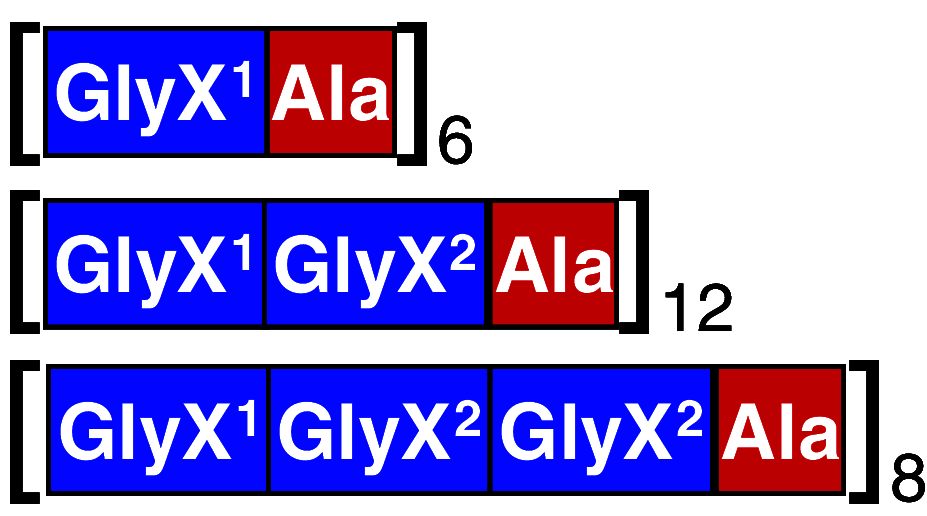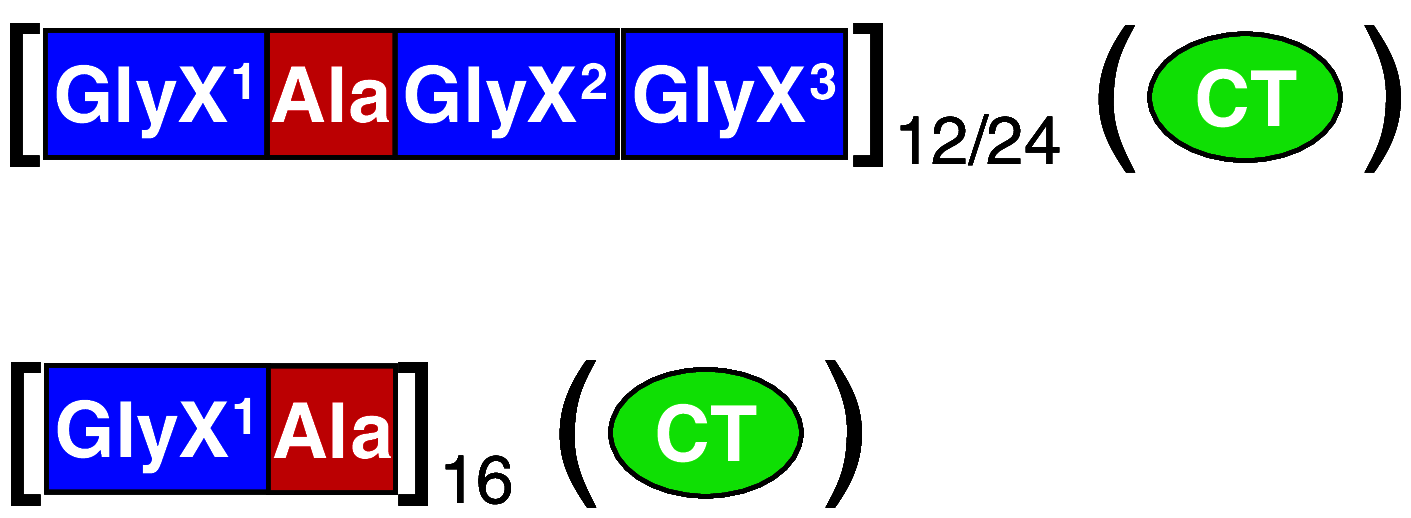Table 3.
Architecture of selected recombinant spidroin fragments
| Schematic description of constructa | Example (construct name) | Block length (residues) | Protein size (kDa) | Reference |
|---|---|---|---|---|

|
DP1B | Ala: 7; GlyX:15–20 | 65–163 | [48, 56, 67, 97] |

|
SP1 | Ala: 5; GlyX:10 | 25 | [49, 50, 54, 59] |

|
1E 2E 3E |
Ala: 8; GlyX: 28 | 63 | [62] |
| 71 | ||||
| 67 | ||||
|
|
1F9 | Ala: 5–7; GlyX: 20–25 | 94 | [9, 86, 87] |

|
SO1 (ELP) | Ala: 6; GlyX: 20–30; 5 different GlyX | 51 | [80, 100] |
|
|
CRGD15 | Ala: 6; GlyX: 20–30 | 55 | [59, 66, 114] |

|
AQ12 (NR3); AQ24 (NR3); C16 (NR4) | Ala: 6–8; GlyX: 6–20 | 48 (60); 94 (106); 48 (58), respectively | [57, 58, 63, 78, 81, 82, 83, 84, 85, 99, 105] |

|
ADF3 | Ala: 6–8; GlyX: 6–20 | 60 | [70, 73] |

|
(NT)4RepCT | Ala: 12–15; GlyX: 13–19 | 12 (21) | [11, 33, 90, 91, 93] |
CT C-terminal domain, NT N-terminal domain
aThe superscript indicates the different nature of the repeat, the subscript indicates the number of bracketed repeats. For longer repeats, internal segments are indicated with dots. Domains within parenthesis are optional
